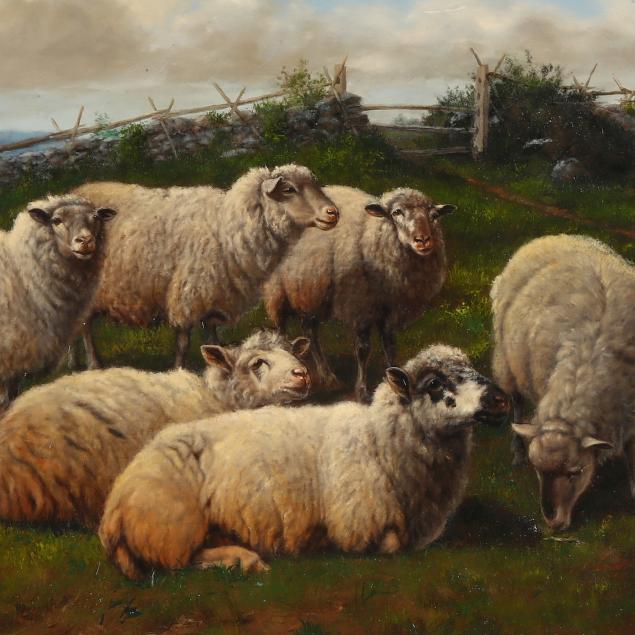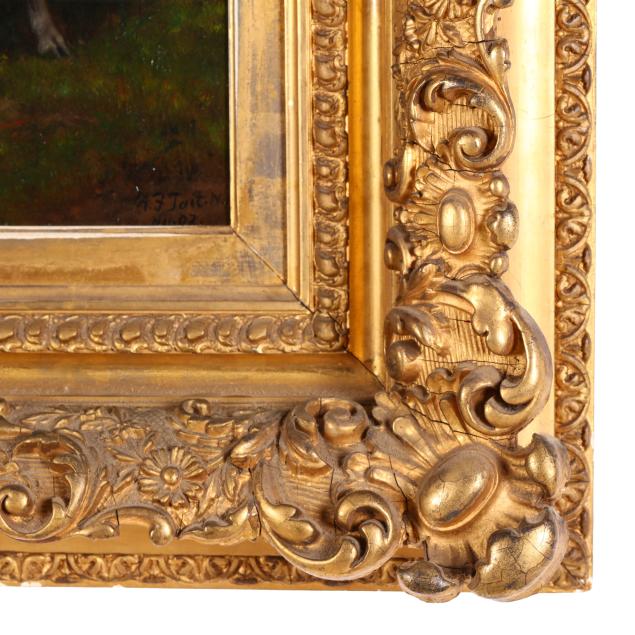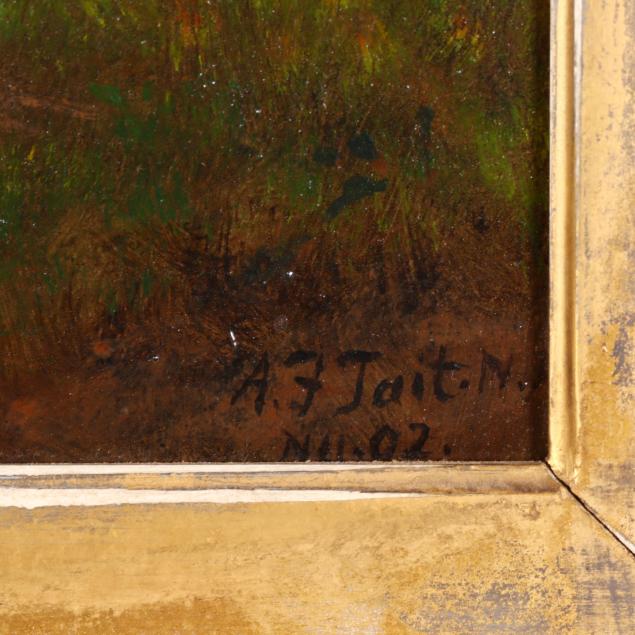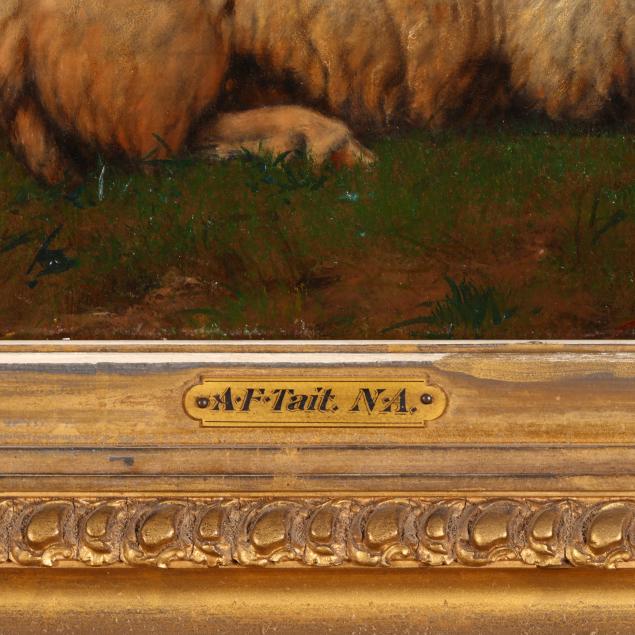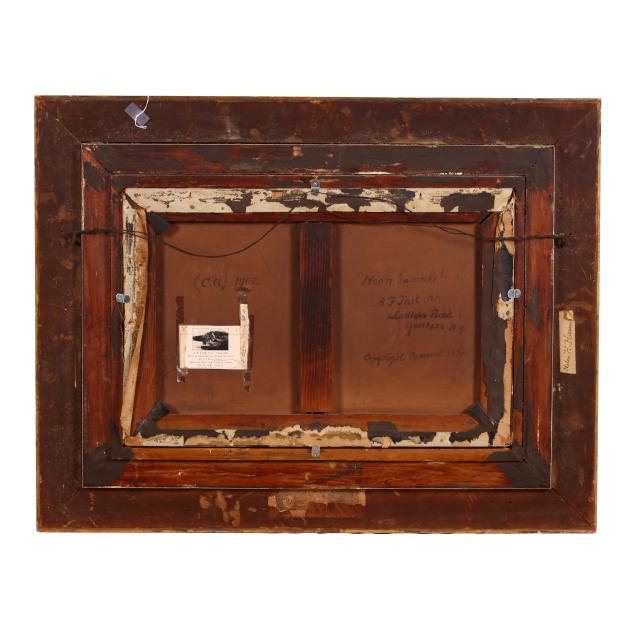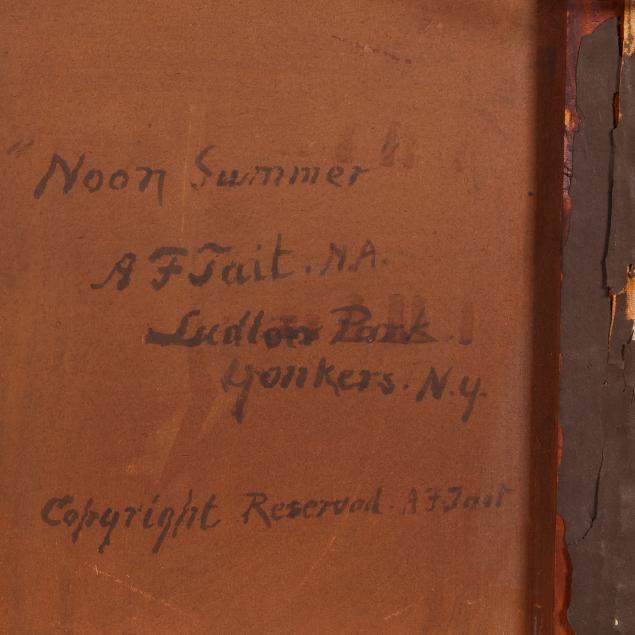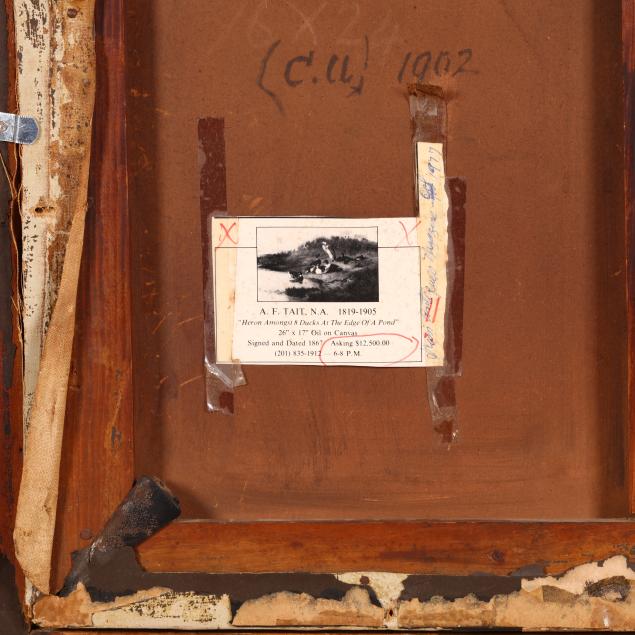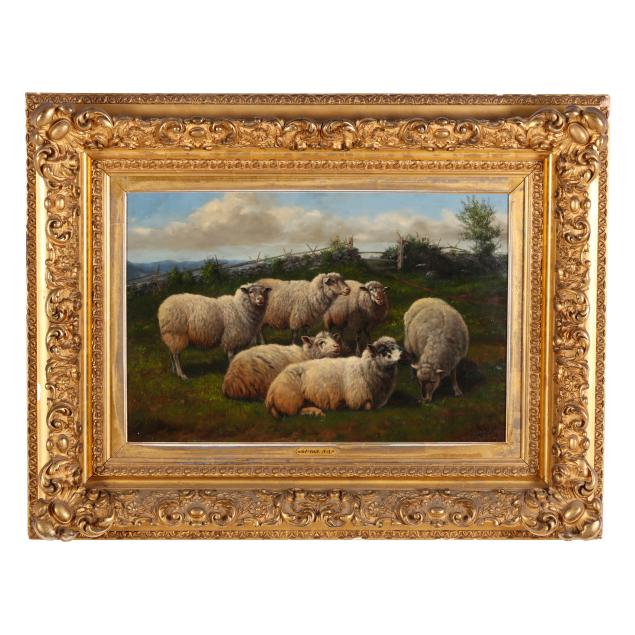
Lot 2046
Arthur Fitzwilliam Tait (American, 1819-1905), Noon Summer
Explore more items like this one.
Visit our Fine Art Department Fine Art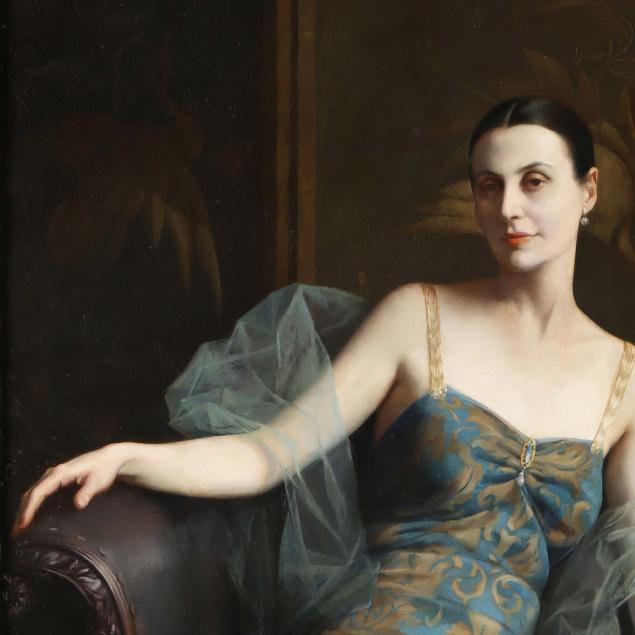
Lot Details & Additional Photographs
Stretcher size 16 1/4 x 24 1/2 in.; Frame dimensions 28 x 36 in.
Arthur Fitzwilliam Tait was a British-born American artist renowned for his detailed and dynamic depictions of wildlife, rural landscapes, and frontier life. Born in Liverpool, England, Tait showed an early interest in art and trained at the Royal Institution in Manchester. He was deeply influenced by the works of naturalist painters and the burgeoning interest in wildlife art during the 19th century. In 1850, Tait immigrated to the United States, settling in New York City. Shortly thereafter, he began spending summers in the Adirondacks, where he found inspiration for his depictions of hunting scenes, deer, and the rugged American wilderness. His meticulously detailed works often captured animals in naturalistic settings, combining a keen observation of nature with a narrative quality that resonated with viewers.
Tait became widely recognized through his association with Currier & Ives, for whom he produced many lithographs of his wildlife and sporting scenes. These widely distributed prints brought his work into homes across America and solidified his reputation as one of the leading wildlife artists of his time. Tait’s works were highly sought after and exhibited at prestigious institutions, including the National Academy of Design, where he became a member in 1858. His ability to blend realism with a sense of movement and life contributed to the enduring appeal of his art. Today, Tait’s paintings remain celebrated for their vivid portrayal of 19th-century American life and their role in shaping the tradition of wildlife art in America.
Later varnish; no evidence of restoration or retouch visible under UV light; some rubbing and wear to wrapped edges of canvas; stable cracks to composition on frame.

